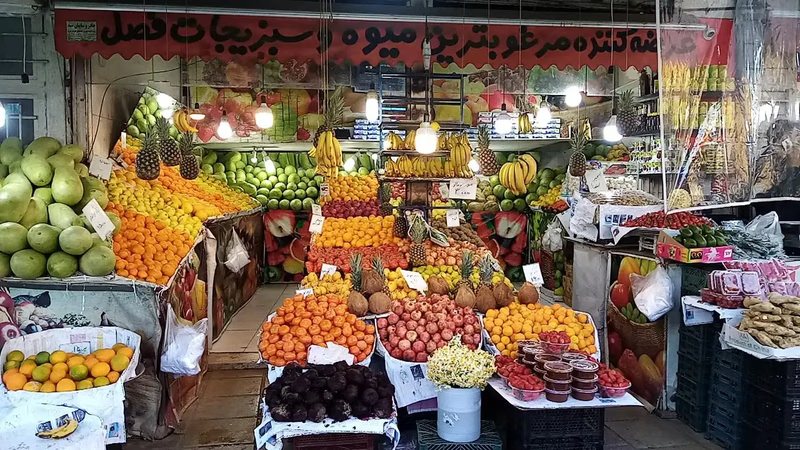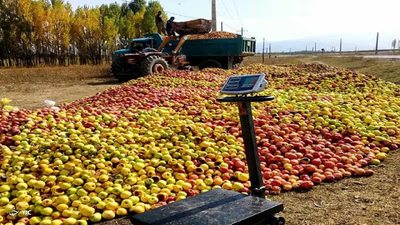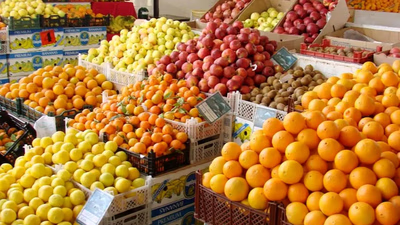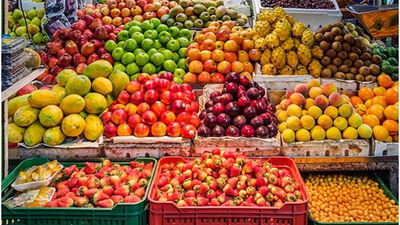
Fresh fruit market insights from Middle East trade platforms.
In West Asia or the Middle East, the demand for fruit is quite high due to the region's warm climate and cultural preference for fresh produce. The main fruits produced in this region include dates, figs, pomegranates, and citrus fruits such as oranges and lemons. However, due to limited arable land and water resources, the supply of these fruits is often lower than the demand. This has led to the import of fruits from other countries, particularly in the Gulf countries where there is high purchasing power. Additionally, the demand for organic and locally grown fruits has been increasing in recent years, creating opportunities for small-scale farmers in the region to meet this demand. Overall, the fruit supply and demand in West Asia is heavily influenced by factors such as climate, water resources, and consumer preferences.
The Middle East region is still a fruit producing region , but it is also known as a fruit consuming region. In some countries of the Middle East, such as Iran, Turkey, Egypt, Syria, Saudi Arabia, and the United Arab Emirates , agriculture and the production of various fruits, including dates, figs, lemons, and olives, are booming. However, due to the climatic conditions and limited water resources in some regions, the Middle East has also provided a suitable platform for importing fruits from other parts of the world. Some countries in the Middle East, such as Saudi Arabia, the United Arab Emirates, and Qatar, for example, rely on imports of fresh fruit and a range of other agricultural products. Therefore, it can be said that the Middle East has both the role of producer and consumer of fruit, but the dependence on imports is more in some countries.
The situation of fruit supply and demand in West Asia is diverse and may be different in each country and region. In some countries, such as Turkey, Iraq, Iran and Lebanon, fruits are produced to a significant extent, and these countries have the capacity to produce different fruits. At the same time, some countries in West Asia are unable to produce enough fruits due to water limitations and climatic conditions and are dependent on imports. Some of these countries include Saudi Arabia, the United Arab Emirates, Qatar and Kuwait , which have the highest demand for imports from other countries to meet their fruit needs.
In some regions of West Asia, such as Israel, advanced agricultural technologies have been used, which enables these countries to produce fruits such as oranges, limes, and pineapples in difficult climatic conditions and with limited water resources. give Therefore, the situation of fruit supply and demand in West Asia is diverse and can be different depending on the country and local conditions.
Another important factor that affects the fruit supply and demand in West Asia is the region's political and economic stability. Conflicts and instability in certain countries can disrupt the production and distribution of fruits, leading to fluctuations in supply and prices. On the other hand, stable and prosperous countries in the region, such as the United Arab Emirates, have a high demand for luxury fruits and are major importers of fruits from other countries. This creates both challenges and opportunities for the fruit industry in West Asia. Additionally, the region's growing population and urbanization also contribute to the increasing demand for fruits as more people are consuming fresh and healthy foods. As a result, the fruit supply and demand in West Asia is a dynamic and complex market that is constantly evolving.
-

Saudi Arabia, the largest economy in the Middle East, heavily relies on fruit imports due to its arid climate and limited agricultural capacity. The UAE, particularly Dubai, acts as a significant trade hub for fruit imports and re-exports, driven by a large expatriate population and a thriving hospitality sector. Iran, despite being a major fruit producer, also imports to meet diverse consumer demands throughout the year. Iraq faces challenges in its agricultural sector due to past conflicts, leading to substantial reliance on imported fruits. Kuwait"s high per capita income and consumer preferences necessitate significant fruit imports as well. Turkey stands out as both a major importer and exporter of fruits in the region, with a diverse climate supporting various crops. Israel has made strides in agricultural technology, exporting high-quality fruits globally. The Middle East fruit market is influenced by climatic conditions, trade policies, and regional economic factors.
Countries like Egypt and Jordan also contribute to the regional fruit trade through exports of locally cultivated varieties. "
-

West Asia"s fruit market is influenced by various factors including climate, agricultural practices, and government policies. Favorable climates and modern farming techniques enhance fruit production, while trade regulations shape the import-export landscape. Consumer preferences significantly impact demand, with trends towards organic and exotic fruits emerging. Climate change poses challenges such as water scarcity and extreme weather, affecting crop yields. Local production levels determine reliance on imports; countries with strong domestic output can become reliable exporters. Additionally, commercial policies like tariffs and financial incentives influence market dynamics. Technical standards ensure quality and safety in trade, while competition among nations drives innovation in pricing and product diversity. Efficient logistics are crucial for managing perishable goods, reducing losses during transport.
Economic factors such as GDP growth and income levels also play a role in consumption patterns. Political stability is essential for maintaining trade flows, as conflicts can disrupt supply chains. Participation in international trade agreements enhances market access and competitiveness for West Asian countries. "
-

In West Asia, the demand for fruit is significantly influenced by the region"s warm climate and cultural preferences for fresh produce. Key fruits produced include dates, figs, pomegranates, and citrus varieties like oranges and lemons. However, limited arable land and water resources often result in supply shortages, leading to increased imports, especially in Gulf countries with higher purchasing power. The rising interest in organic and locally grown fruits presents opportunities for small-scale farmers to cater to this demand. While countries like Iran, Turkey, Egypt, Syria, Saudi Arabia, and the UAE are notable producers of various fruits, others such as Saudi Arabia and Qatar heavily rely on imports to meet their needs. The diversity in fruit supply and demand across West Asia is shaped by local climatic conditions and agricultural capabilities. Advanced agricultural technologies in regions like Israel allow for the production of fruits under challenging conditions. Political stability also plays a crucial role; conflicts can disrupt production and distribution channels, affecting supply and pricing.
Conversely, stable nations like the UAE exhibit high demand for luxury fruits as major importers. Additionally, urbanization and a growing population further drive the need for fresh produce in the region. Overall, the fruit market in West Asia is dynamic and complex, reflecting both challenges and opportunities. "
-

Fruit is integral to the culture and religion of the Middle East and West Asia, serving as a vital part of daily life and various ceremonies. It symbolizes happiness, beauty, and blessings while providing essential nutrition. Fruits like pomegranates, dates, tangerines, mangoes, and barberries are not only dietary staples but also hold significant roles in traditional medicine. For instance, pomegranates are revered for their healing properties and are associated with health and joy. Cultural events such as Nowruz highlight the importance of fruits as symbols of wealth during weddings and celebrations. Additionally, fruits inspire art and literature in these regions, representing beauty in various forms. The diverse uses of fruit reflect deep-rooted beliefs that intertwine health benefits with cultural significance.




